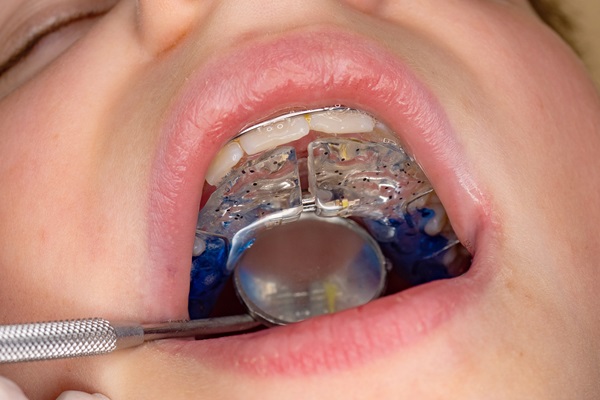What Are Palatal Expanders in Orthodontics?

Palatal expanders are used to widen a patient’s palate (the roof of the mouth), creating more space for their top set of teeth. The American Association of Orthodontists recommends bringing your child in for their first bite assessment by the time they reach seven.
At this stage in their development, their bite should be established enough to spot orthodontic issues. Early detection is crucial since the developing jaw and craniofacial structures of children are considerably easier to mold than the structures of adults. This can shorten the length of treatment by more than half.
Some of the issues that indicate a patient’s palate might not have enough space include:
- Impacted teeth
- Crossbites
- Crowded teeth
Improving bites with palatal expanders
Some people are born with smaller palates due to genetic and other factors. Not having enough space in the roof of the mouth leads to orthodontic issues as the child’s permanent teeth start to erupt. Expanders work by gently applying force on the wearer’s palate, encouraging it to grow. This creates more space on the jaw, reducing the risk of orthodontic issues in the future. Expanders also make correcting any existing orthodontic issues easier once space has been created on the patient’s jaw.
Treatments times with palatal expanders are typically somewhere between three to twelve months. Pediatric orthodontists often keep the appliance in place even after the desired growth has been achieved so the palate can solidify in its new shape.
Expanders can be removable or fixed. They are customized for each child, so they fit correctly along the roof of their mouth. The most recommended types of palatal expanders include:
- Rapid palatal expanders: These are the most commonly used type of expanders. They fit parallel to the molars in the upper dental arch. RPEs with a central screw that is used to activate the device. The orthodontist provides the patient with a key that is used to manipulate the screw and gently push the palatal bones. Treatments with RPE are often completed within six months
- Removable palatal expander: These are recommended when a child’s palate only needs to be slightly expanded. The appliance looks like a retainer, but it comes with a center screw that works similarly to the ones that come with RPEs
- Mini-Implant Assisted RPE: These devices are typically recommended for older patients who did not get orthodontic treatments they needed when they were younger. Such patients require a more powerful appliance to expand their palate since their craniofacial structures have hardened at that point. Mini-Implant Assisted RPEs involve placing two to four mini-implants on parallel points on the patient’s palatal bones. These implants are linked with a center screw. As is the case with the other types of expanders, the screw is used to activate the device
Get your child off to a good start
Issues like a child’s palate not having enough room for their teeth are best addressed early while their bones are still developing. Give us a call or visit our Los Angeles clinic to set up an appointment with our pediatric orthodontist.
Request an appointment here: https://nelaortho.com or call NELA Orthodontics at (323) 203-0721 for an appointment in our Los Angeles office.
Check out what others are saying about our services on Yelp: Expanders in Los Angeles, CA.
Related Posts
Wondering whether wearing retainers is really necessary? Read on to learn more. You know braces and aligners can help you get those straight teeth you desire, but retainers are the next step. These little devices will keep your teeth aligned and your smile beautiful for years.Retainers are custom orthodontic devices that help keep the teeth…
Expanders are custom-made appliances that can play an important role in orthodontic treatment. A narrow upper jaw can contribute to several orthodontic issues that are not treatable with braces alone. Therefore, an orthodontist may recommend this appliance to create more space for teeth to align properly.Expanders, commonly referred to as palatal expanders, fit across the…
Clear aligners are one of the most popular methods in orthodontics to address issues with alignment. Over the years, the technology behind aligners has improved greatly, thus allowing for more and more issues to be resolved. In addition to the versatility behind clear aligners, they offer an array of benefits that other approaches do not…
A teen orthodontist is a trusted partner for adolescent patients to achieve healthy, confident smiles. These dental specialists can address teeth alignment and jaw concerns during this stage of oral development. After all, orthodontic treatment during the teenage years can be especially effective; the mouth and jaw are still growing, making them more responsive to…
